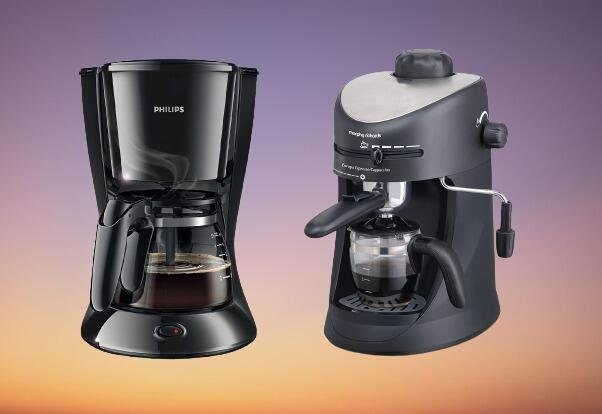Water purification is a process that removes contaminants from water to make it safe to drink. The most common type of water purification filter is the reverse osmosis (RO) filter.
What is an RO water purifier?
An RO water purifier is a filtration system that removes impurities from water by passing it through a semipermeable membrane. RO stands for reverse osmosis, and these systems work by using pressure to force water molecules through the tiny pores in the membrane, leaving behind contaminants like salts, metals, and other pollutants.
RO water purifiers are designed to remove many impurities, making them ideal for homes and businesses. These systems can significantly improve your water quality, providing you with clean, safe drinking water.
Recommended Buying:
1. KENT Supreme Copper RO+UV Water Purifier

2. Aquasure From Aquaguard Amaze RO+UV+MTDS water purifier

The different types of filters in a standard RO water purifier
A standard RO water purifier typically has four filters: a pre-filter, a sediment filter, a carbon block filter, and the RO membrane. Each type of filter serves a different purpose in the filtration process. These four filters work together to provide clean, safe drinking water. It’s essential to change your filters regularly to maintain optimal performance.
Pre-Filter
Pre-filters are typically the first stage of filtration in an RO system. They remove larger contaminants like sediment, chlorine, and rust from the water before it enters the RO membrane. Pre-filters are important for prolonging the life of the RO membrane and ensuring that it operates at peak efficiency.
Pre-filters can be made from various materials, including carbon, polypropylene, and sediment filters, designed to remove large particles from the water, such as sand, silt, and rust. Carbon filters effectively remove chlorine, VOCs, and taste and odor-causing compounds. Polypropylene filters are often used in commercial RO systems because they have a high dirt-holding capacity and can withstand higher temperatures.
Sediment Filter
As water passes through a sediment filter, impurities such as sand, dirt, and rust are removed. This type of filtration is typically used as the first stage in a multi-stage RO water purifier system. The sediment filter is usually followed by a carbon block or GAC filter to remove any remaining impurities.
Carbon Block Filter
A carbon block filter is a filter that uses activated carbon to remove impurities from water. Activated carbon is a type of carbon that has been treated to have a large surface area, which allows it to adsorb more impurities than other types of carbon. Carbon block filters effectively remove many impurities, including chlorine, lead, and other heavy metals. They also effectively remove organic compounds, such as pesticides and herbicides. Carbon block filters typically last for six months before they need to be replaced.
Recommended Buying:
1. Konvio Neer Water Purifier Spare Kit Consisting of Carbon and Sediment Filter Cartridge

2. AQUA DOVE Universal Carbon Sediment Kit Premium Filter Set for RO Water Purifier

3. Ionix Inline Filter Set , Activated Carbon Filter for ro Water Purifier & Sediment Filter for ro Water Purifier

RO Membrane
Reverse osmosis (RO) membranes are one of the most critical components in a reverse osmosis water purifier. RO membranes are designed to remove a wide variety of contaminants from water, including dissolved minerals, bacteria, viruses, and even some larger particles.
RO membranes are made from various materials, including cellulose acetate, polyamide, and thin-film composites. The type of material used in an RO membrane will determine its performance and durability. For example, cellulose acetate membranes are less durable than polyamide or thin-film composite membranes but can be used for a wider range of applications.
When choosing an RO membrane for your water purifier, it is essential to consider the specific needs of your home or office.
The ultraviolet light
Ultraviolet light (UV) is a type of electromagnetic radiation that is invisible to the human eye. It has shorter wavelengths than visible light and can harm living things. UV light is used in water purification because it can kill bacteria and other microorganisms.
There are three types of UV light: ultraviolet A (UVA), ultraviolet B (UVB), and ultraviolet C (UVC). UVC has the shortest wavelength and is the most harmful type of UV light. It is wholly absorbed by the ozone layer and does not reach the Earth’s surface. However, UVC can be produced artificially, such as in germicidal lamps.
UVB has a slightly longer wavelength than UVA and also harms living things.
UF membrane
A UF membrane is a type of filter that is often used in RO water purifiers. UF stands for “ultrafiltration.” This type of filter is designed to remove very small particles from water, including viruses, bacteria, and other contaminants.
UF membranes are made of a porous material that allows water to pass through but traps contaminants. The pores in a UF membrane are usually between 0.1 and 0.01 microns in size. This means they can remove very small particles from water, including viruses and bacteria.
One advantage of UF membranes is that they do not require electricity. This makes them a good option for purifying water where power may be unavailable or unreliable.
Post-Filter
There are many different types of filters in a standard RO water purifier, but the post-filter is one of the most important. The post-filter is located after the RO membrane and removes any remaining impurities from the water. This is important because it ensures your water is as pure as possible. Many different types of post-filters are available, so choosing one that will be effective at removing the impurities in your water is essential.
How to change your filters
Changing your filters is essential to maintaining your RO water purifier and should be done every 6 months or so. Here’s a step-by-step guide to changing your filters:
- Locate your filter housing—this is usually located near the bottom of your RO unit.
- Unscrew the housing and remove the old filter(s).
- Insert the new filter(s) into the housing and screw it back on tightly.
- Flush the system by running some water through it until it runs clear.
- If your system has a post-filter, you may also need to replace that.
- Replace the water tank and turn your unit back on.
Conclusion
It is essential to know the different types of filters in a standard RO water purifier to understand how the purifier works and what it does to your water. We hope this article has helped you to gain insights into the topic. Thanks for reading..!







